(After Hans Gunther)

More plates from the Die leiblichen Merkmale der fälischen (dalischen) Rasse over on "White-History":

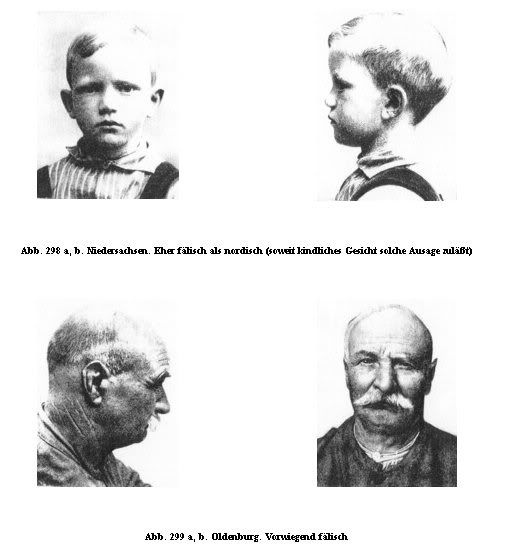
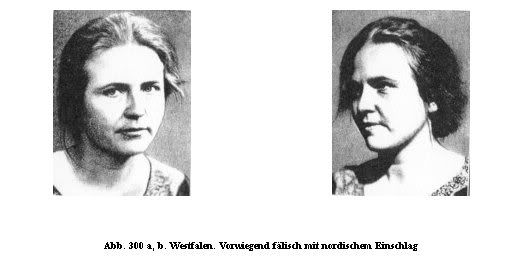
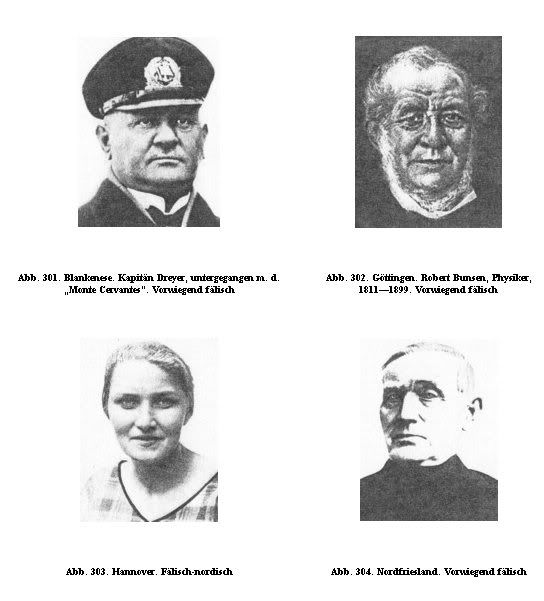
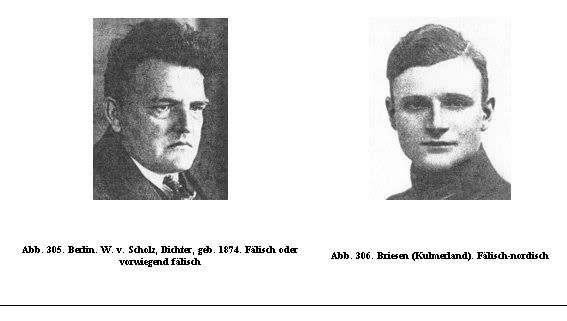
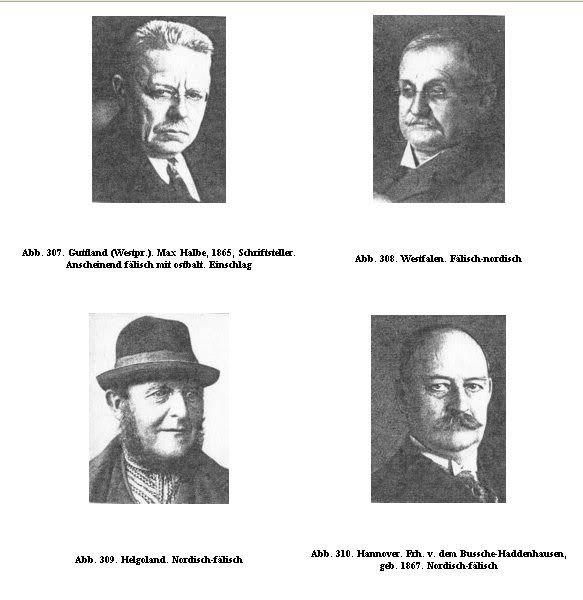
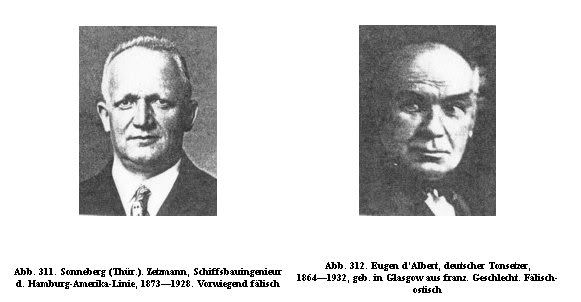
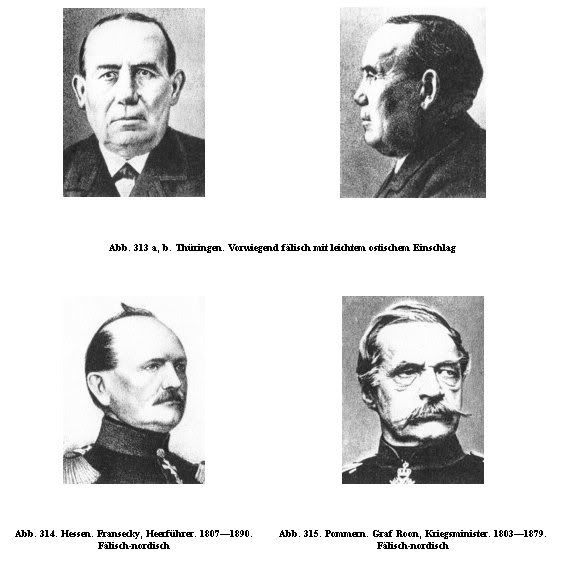

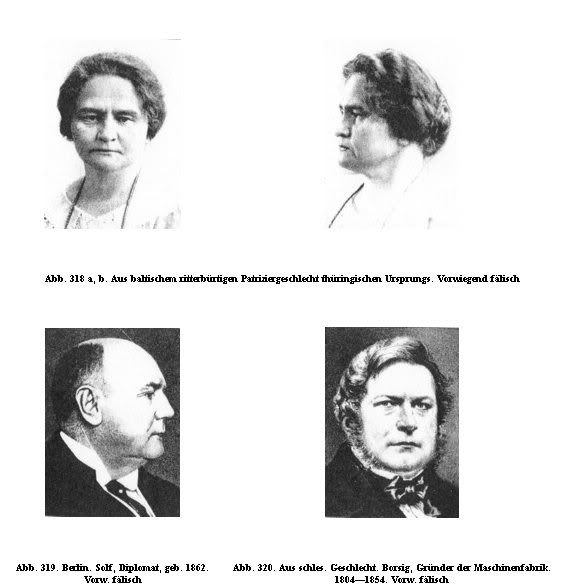
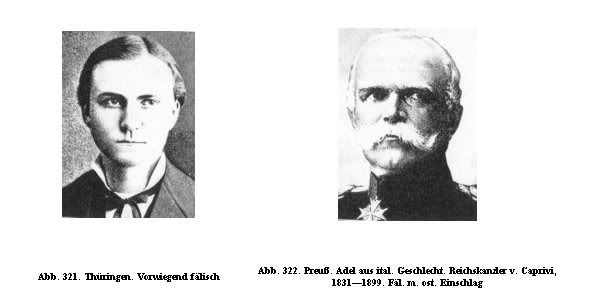
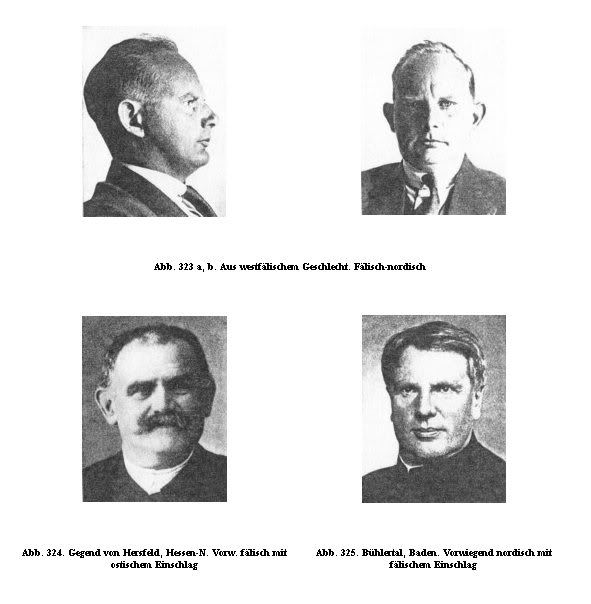
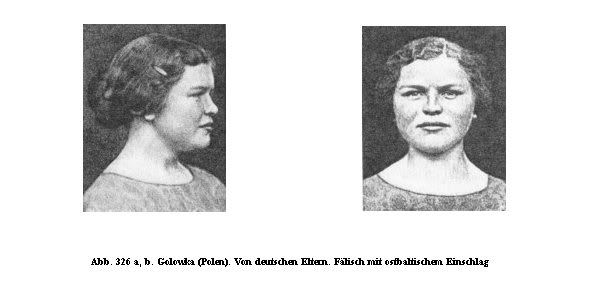
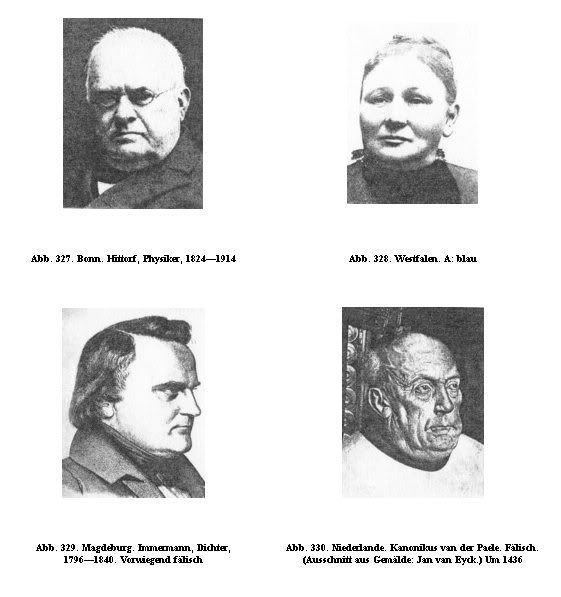

(After Clauss)
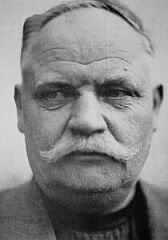
(After Ludwig F. C.)
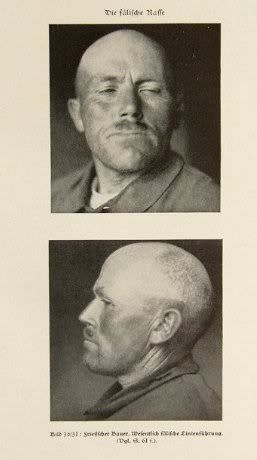
This seems to be Hans Gunther's creation, a taxon that disappeared on and off in his racialist writings and adopted by some other authors(mainly German or German influenced). Corresponds to Coon's robust Alpines(Borreby) . The Canary Islanders were always written up as Alpine and Mediterranean, but Gunther connected these those peoples of North Africa. So whatever it was, it is a composite and perhaps an umbrella type including Meso-brachycephalic/ broad-headed crania, verging from Nordic, Mediterranean, Alpine to even an East-Baltic. Gunther chose the name "Westphalian"( or dalo-Nordic, Phalian, Faelid), after Westpahlia, Germany(an area Coon wrote up as Borreby). Gunther describes it as a disharmonious type and not very common.
Did a translation from this:
http://www.white-history.com/earlson/fal001.htm
- Gunther
It is expected the Westphalian (dalische) race can hardly be the main races of Europe today, although it here and there in Northwest Europe - but also prominent in the Canary Islands ¹ - with sufficient clarity. It is more of a racial balance from the Paleolithic Europe, according to some researchers (see p. 24) to a variety of the Nordic race. The following description takes most of the descriptions of the Westphalian (dalischen) race in P a u d l e r und K e r n.
The Westphalian breed is tall, on average in males a few inches higher than the Nordic race, barely higher in females. But it is not about race at the Westphalian schlankhohen growth, but breithohen to "box-shapes," as one observer has commented to me once. The Westphalian breed claims, in stature as in the details of their structure the impression of power: as the massive head is sitting on squat neck, above the wide, almost horizontally extending shoulders, then the Hüftenschmalheit to the Schulternbreite in men not emphasized, there are in fact broad , massive hips in front of male sex. The thighs appear in the Westphalian breed relatively longer, the lower leg to be shorter than the other Tall races of Europe. Joints, such as hands and feet are relatively larger and heavier than in the Nordic, or even the west-race. All Leibesbau has serious, but not really cumbersome.
The Westphalian race is wide (low) and long face-to mittelköpfig. Tends of Nordic head in top view to elliptical shape, the Westphalian to a wedge shape, by more clearly in his area of greatest head width in the section behind the ears apart. The facial part has a massive and breit.4 You could Westphalian face with one from above and below
low-breitgedrückten Nordic face compare. ¹ The zygomatic is relatively large, the Unterkieferwinkelbreite (see p. 36) as well, however, the face amount (see page 35) is relatively low.
At the low facial height mainly reflects the low building in the middle face between the upper orbital margins and the level of the inferior approach in detail the low-built eye sockets and the relatively short nose.
In side view showing the head of a Westphalian (Nordic opposite of) the less high brow, rises slightly more steeply than the northern front reclined. More significant than the Nordic race, often with a pronounced kink in the transition takes place in front of the skull roof. It seems as if even get to the Westphalian breed frontal eminence (p. 100), the young age also. A very distinctive train receives the Westphalian forehead by the umbrella-like thickening of the frontal bone above the eye sockets. You can talk to the Westphalian breed hardly Überaugenbögen of at least one would have to describe the Überaugengegend the Westphalian breed as very deep-seated Überaugenbögen. But we talk about, if you do not want to talk about a supra-orbital ridge (torus supraorbital), better by a bone shield over the eye sockets, because that is the upper orbital margin of the Westphalian breed protrudes further forward over the lower orbital margin than in the Nordic and Dinaric race. Occasionally, may indeed even within the Westphalian breed.
Forehead forms occur, which show a continuous bead across both eye sockets and the nose of time, so that one would almost say (as in the Neanderthal race or the modern Australians) from a supra-orbital ridge (supraorbital torus). Any event, the Überaugengegend the Westphalian breed very "ancient" features.
The eyes are embedded within those learning the Überaugengegend accordingly, deep to the back. They appear small because they are in lower cavity and squeeze the soft parts like the bony environment they seem. The nose is indented under the Stirnnasenwulst (glabella). However, the nose rises from its source stronger than about ostische nose, perhaps not as strong as the Nordic. The nose height (length) is smaller than in the Nordic race. The most-powerful-looking squat nose is bent out nearly straight or slightly blunt tip, they can approach the female sex of a (male) ostischen nose in the form. In males are apparently fairly short, fairly broad-backed, but is not jumping out noses rare. In side view clearly shows the broad, compressed mouth appearing column.
The lower jaw has a massive, the mandibular angle area stands out clearly. Mandibular body and branch (Fig. 3b) often form nearly a right angle. The chin looks coarser than in the northern or west-breed, but stressed, as in the Nordic race is, but not as much as in the Nordic race a Kinnunterlippenfurche, that indentation in the area of the tooth pockets (alveoli) of the lower incisors. The lower front chin has therefore not settled, the whole chin so massive, massive.
The skull is more or less curved than in the Nordic race. The head of the Westphalian breed loads on the neck from far back as the Nordic or westische head. But the bulge is mostly less evenly than in the two Langkopfrassen; the Westphalian occiput seems like the whole head square, the transition appears disposed to the cranium protruding occiput more angular, Benso, the inflection of the occipital hinausgewölbten against the neck down. More educated and more often than in the Nordic race appears in the Westphalian is a thick seam of standing out against the occipital parietal bones (see p. 45). The front view of the Westphalian face conveys but it was the most characteristic traits of the breed. Here, the baseness of the face appear until much, especially the mention of the meanness midface. With close-cropped hair or baldness Westphalian men can be observed that the parietal bones clearly than in other breeds a skull "form roof", they encounter seem to often meet in a less obtuse angle they result in a Längsgrat of the cranial vault, while this other in the long-headed races no clearer medium survey shows. The Westphalian face often appears to the width of the midface recovered, particularly in the temporal region. The front view gives mainly the significant development of the Westphalian eye area. The eyebrows are usually already in middle age very hairy, with less than adjacent to the front and bottom protruding hairs. The shape of the eyebrows is almost a straight line as the projecting Überaugengegend. Under the umbrella of the protruding bone in the female sex is not easy acting Überaugengegend are "small", ie kleinwirkende eyes, deeply embedded backwards in low caves. The distance between the inner eye corner from each other greater than for the other European races with the exception of the East Baltic. Peculiar effect on some faces of the Westphalian train, dragged down in particular that looks the one eyebrow, the other appears lifted (see Figure 296, 299, 312, 324). Westphalian hanging brow is particularly low. From the top half of the eyeball is slightly visible, but also the lower half is covered by the eyelid, that the iris (Iris) in the bottom half is not quite visible. The upper lid is lowered, especially if it is stored fat, usually already at an early age in the S. 160 to be described by way up the inside to the outside bottom. Often seems the right eye to be more visible than the left, it will appear "bigger". Massive rise from the zygomatic arch. But they form only in the case of thin sunken cheeks a body accented greatest width of the face, as they also differ from other East Baltic or central Asian zygomae by their much more "European" education. The most far to the outside standing area of the Westphalian zygomatic arch is higher up and farther back than in the intra-Asia and even the East Baltic race.
The Westphalian nose is wider than the northern, narrower than the East Baltic, longer than this, but shorter than the Nordic. It has, even if it pops out in rare cases, bent out fairly strong, a wider back, bends more or less angular at the sides, "carved out of wood (core), the nose rises often from themselves, by themselves something ausbiegt (side view) and widened (front view). The nostrils are usually thick, but to lie flat. From the nostrils shows neither front nor side view of a lot. The nostrils rich usually so far down that is visible from the nasal septum (septum) in side view nothing or almost nothing. The mouth opening is long, remarkably straight, with thin lips pressed acting - a "money-box mouth" (Paudler). The lower jaw is broad and massive with a broad, little settling chin. The neck is relatively short, stocky and has a stringy, even edgy.
The W attenuator reinforce the impression of the heavy weight of this head. Increased nasal labial fold (see p. 103) occurs even in younger men, as well as a fold or wrinkles between the eyebrows, and indeed a tendency to wrinkles often occur even in middle age seems. The nasal-labial fold often undergoes a significant extension of the mouth angles to the chin, another wrinkle lays behind the nose-labial fold on you. The male head receives earlier than in other breeds have wrinkles which increase with the Westphalian breed by a straight course, the width of the face shape, emphasizing the horizontally (Brauendach, mouth column).
The H is aut rosy-bright, his face seemingly rosy even in adolescents, even redder than in the Nordic race, which may often show a distinct cheeks. The skin of the whole body is doing on the Westphalian breed a thicker, less frequently at once delicate and redder than in the Nordic impression.
The H aar: peculiarities of body have not yet been described. The head hair is most dense, certainly harder than in the Nordic race, perhaps less frequently simple, often wavy or curly, yes engwellig. It seems to old age to obtain robust than in the other European races. The color seems to be consistent with that of the Nordic race, perhaps the inclination is more to reddish shades of blond hair. ¹
The A ugenfarbe after the Westphalian breed seems more likely than the gray to blue tend to. In any case, come to her bright eyes. (For the Westphalian breed see also Figure 377, p. 273)http://s1.zetaboards.com/anthroscape/topic/3143694/1/